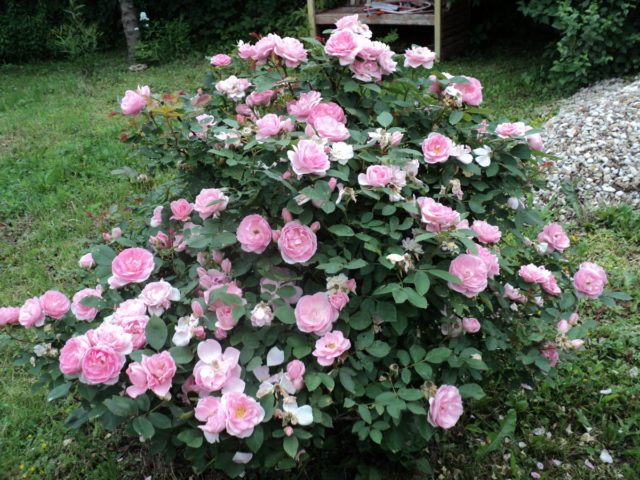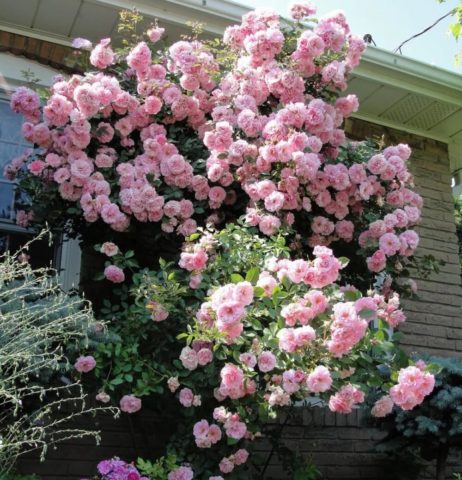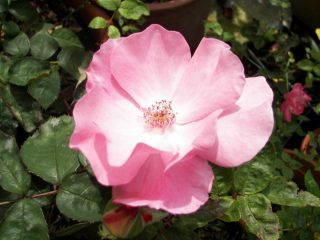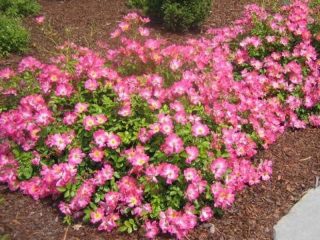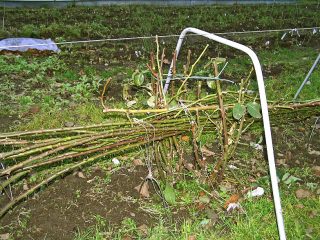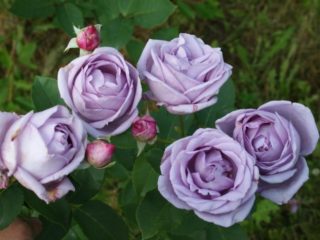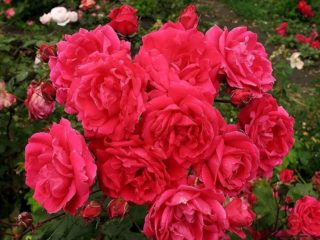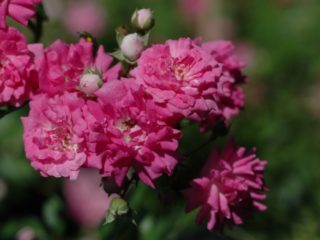Content
- 1 History of selection
- 2 Description of the John Davis rose variety and characteristics
- 3 Advantages and disadvantages
- 4 Reproduction methods
- 5 Growing and caring for Canadian park rose John Davis
- 6 Pests and diseases
- 7 Application in landscape design
- 8 Conclusion
- 9 Reviews with photos about rose John Davis
Park varieties of roses have gained wide popularity among gardeners. Such plants combine excellent decorative qualities and resistance to adverse conditions. Rosa John Davis is one of the most prominent representatives of the Canadian park group. This variety is easy to care for and resistant to frost and disease.
History of selection
The John Davis variety was bred in Canada. The organizer of the work is the famous breeder Felicia Sweid. The plant was included in the international catalog in 1986.
When creating roses, John Davis crossed varieties of Rugosa and wild rose hips. The result is a bush that is highly decorative and low sensitivity to adverse factors.
Description of the John Davis rose variety and characteristics
It is a shrub with long climbing shoots. The height of John Davis roses reaches 2 m. The plant quickly grows in width - up to 2.5 m.
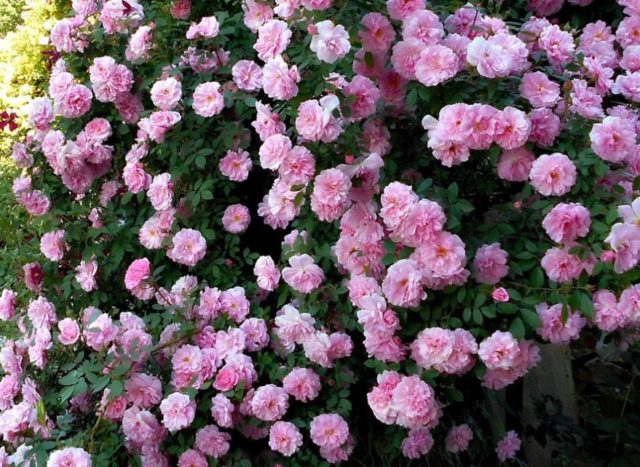
Annual growth of bushes – up to 40 cm
In the first 1-2 years, the shoots are short and erect, which is why the John Davis rose looks like a standard one. Subsequently, the stems begin to bend toward the ground. To maintain the neat shape of the bush, a garter to the trellis is required.
The shoots are strong, elastic with dark green bark, and are not prone to lignification. There are practically no large thorns on the stems. The foliage is dense, lush, along the entire length of the shoots. The plates are oval, 5-6 cm long, with jagged edges. The leaves are matte, rich green.
The budding period begins in mid-to-late May and continues throughout June. The John Davis variety begins to bloom in the first month of summer. The buds open quickly and gradually fade by mid-July.
The plant blooms very profusely, continuously. Inflorescences of 10-15 buds are formed on the stems. The flowers are densely double, round hemispherical in shape, consisting of 50-60 petals. Color – bright pink. The aroma is pleasant, strongly pronounced even from a distance.

John Davis rose flowers fade in the sun and turn ashen
The John Davis variety is characterized by high cold resistance. The plant tolerates frosts down to -29 degrees. In the south and regions of central Russia, there is no need to cover bushes for the winter. Such measures are necessary only in Siberia and the Urals, where the temperature in winter is constantly negative.
John Davis rose bushes remain decorative until mid-autumn. In October, the foliage on the bushes begins to fade, resulting in bare stems.
The variety does not tolerate drought well. This is explained by the large number of leaves, which quickly evaporate moisture in the summer. Overwatering can also harm bushes, especially when soil compacts near the roots.
John Davis roses are disease resistant. The risk of developing powdery mildew and black spot exists only with high humidity or during drought.
Advantages and disadvantages
John Davis is recognized as one of Canada's best park varieties. The plant has many advantages over other species.
Among the main advantages:
- very abundant flowering;
- low demands on soil composition;
- good winter hardiness;
- rapid growth of shoots;
- low sensitivity to infections;
- Possibility of growing as an ampelous plant.
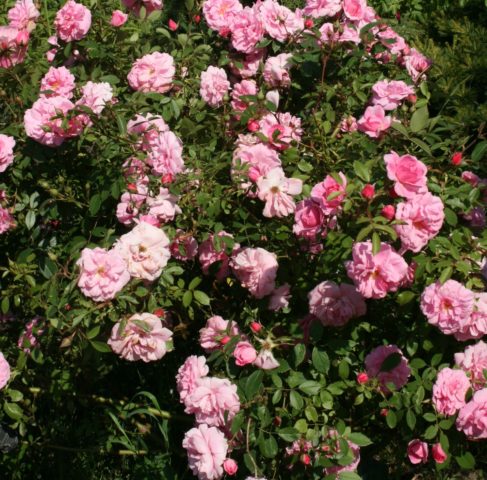
Variety John Davis does not require formative pruning
The plant has several disadvantages. This should definitely be taken into account when planting this variety in the garden.
Main disadvantages:
- low drought resistance;
- possibility of damage to pests;
- need for garter;
- relatively short flowering period.
Another disadvantage is the presence of small thorns. When working with the plant, precautions must be taken.
Reproduction methods
Bushes over 3 years old can be divided. You need to select one young stem, remove it from the trellis, dig up the rose and separate the shoot with its roots. In the future, plant the resulting division in a new place, after soaking it in an antiseptic. In this case, the stem needs to be trimmed, leaving 8-12 cm to speed up rooting.

Division is carried out in spring or autumn after flowering.
John Davis roses have long and resilient shoots. Therefore, this variety is convenient to propagate by layering. You need to select 1 stem, remove it from the trellis and bend it to the ground. It is sprinkled with nutritious soil and watered. After 4-5 weeks, roots appear on the shoot. It is separated from the mother bush and planted in a new place.
Adult bushes can also be propagated by cuttings.Shoots with 2-3 buds and several leaves are harvested as planting material. It is recommended to root them in a container with soil and then plant them in open ground in the fall.
Growing and caring for Canadian park rose John Davis
It is recommended to plant in the fall so that the seedling is well rooted before the onset of cold weather. If you plant a bush in the spring, a lot of nutrients will be spent on shoot growth and foliage formation.
For park rose John Davis, places with partial shade are best suited. It will develop worse in the shade.
The area for the rose is prepared in advance. Remove weeds, dig up the soil, apply fertilizer. The bush requires a planting hole 60-70 cm deep and a similar width. Expanded clay or crushed stone must be placed at the bottom to drain liquid.

The seedling is placed in a planting hole with a depth of 4-5 cm
The roots of the plant should be covered with a loose soil mixture of garden soil, turf, river sand, compost and peat. After planting, the seedling is watered. If necessary, a support is immediately installed nearby.
Caring for a John Davis rose involves the following activities:
- Regular watering, 1-2 times a week, as the soil dries out.
- Loosening the soil around the bush 1-2 times a month to a depth of 10-12 cm.
- Mulching the soil with bark, sawdust or peat.
- Sanitary pruning in the fall to remove faded flowers and foliage.
- Hilling up the lower part of the shoots to protect against overheating.
The John Davis variety responds positively to fertilizing. In spring and when buds appear, nitrogen solutions are added. When flowering, fertilizers with potassium and phosphorus are recommended.In the fall, a complex composition is given in combination with humus or compost.
Preparation for winter involves removing shoots from the trellis. The stems need to be carefully twisted and placed at the base of the bush. To protect them from frost, the shoots are covered with dry leaves and covered with spruce branches.
Pests and diseases
The John Davis variety exhibits resistance to many infections. But the risk of infection cannot be completely eliminated, especially if the rules for caring for park roses are not followed.
Possible diseases include:
- powdery mildew;
- rust;
- bacterial cancer;
- black spot;
- bark burn.
To prevent diseases, it is necessary to spray the rose with a fungicide 2-3 times a year. Be sure to carry out processing in the fall.
Pests of climbing roses:
- spider mite;
- aphid;
- thrips;
- cicadas;
- pennies;
- leaf rollers.
It is advisable to use a liquid soap solution against insects. 200 g of grated laundry soap are diluted in 10 liters of warm water. Spray the rose with this product. The solution repels insects.
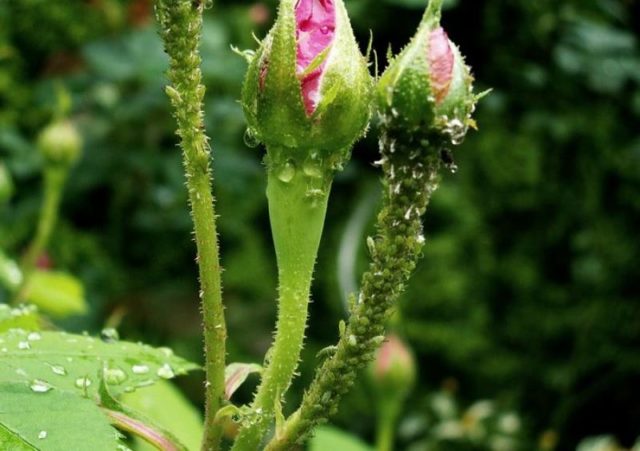
If damaged by insects, the bush should be sprayed with an insecticide.
Special drugs act quickly. 2-3 treatments are enough to get rid of insects.
Application in landscape design
The John Davis variety is used for vertical gardening. Planting several bushes in a row allows you to create hedges 2 m or more in height. In such plantings you can use John Davis roses, as well as other park climbing varieties.
When creating compositions, the plant should be given a central place. It is recommended to plant flowers and shrubs nearby that are undemanding in terms of soil composition and lighting.
Astilbe, sage, juniper, and lupins are good neighbors.You can plant armeria and carnations.
Landscape flower beds are created in the form of natural thickets. They can be supplemented with John Davis roses in combination with other low-growing varieties.
Conclusion
Rose John Davis is recognized as one of the best among Canadian park varieties. The plant has unique decorative qualities and is actively used in landscape design for vertical gardening. The variety is unpretentious and tolerates unfavorable conditions well. Therefore, it can be grown in regions with any climate.
Reviews with photos about rose John Davis
